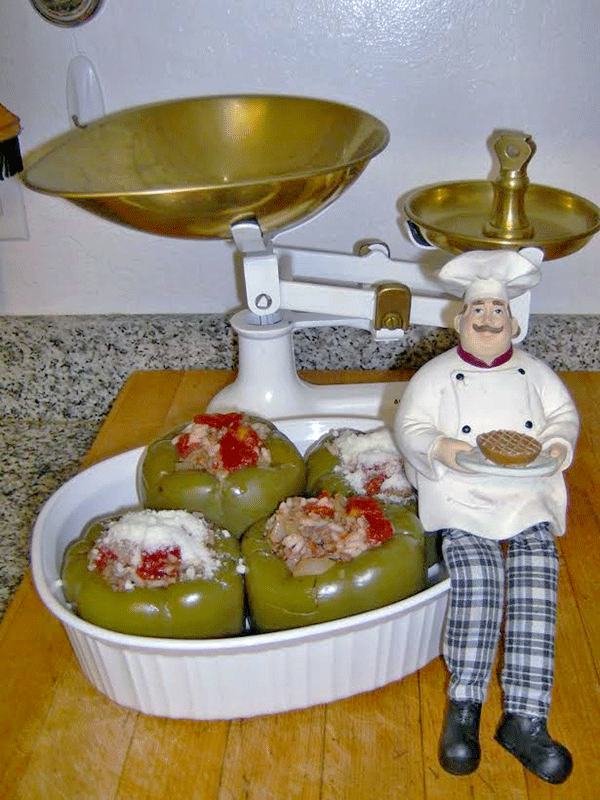I cannot remember seeing a green bell pepper until I was married and buying food for my own dinner table. Even then, those shiny, green, unfamiliar peppers never made their way to my grocery cart.
It was in the 1960s that Watsonville had its own Chinese restaurant located near the corner of Main Street and Eastlake Avenue. Our family of four could eat dinner for less than eight dollars and that included a 10 percent tip.
It was during that period of time I discovered bok choy, bean sprouts, and bell peppers. We would read the menu over and over, imaging how these strange ingredients would taste.
Being very careful of what little money we had to spend, we usually fell back to what we knew was good — Chop Suey or Chow Mein.
And then, just a few doors north of the restaurant, the Chinese grocery opened its doors. Star Market became my “go to” market and, in fact, I worked for them between 1965 and 1968.
Soon, more and more fresh vegetables found their way to my dinner table, and one dish that Betty Crocker featured in her cookbook was “stuffed bell peppers” prepared at least a dozen ways. These peppers became a favorite at our table, and still today, my hubby will remark: “Stuffed peppers for dinner, great!”
Green bell peppers in the markets are fully developed, but not ripe. Left on the vine to fully ripen, these peppers go through color and sweetness changes. Orange, yellow, purple, black, brown or ivory colors depend on their ripeness and varieties; all starting out green in color.
Because of the time it takes to ripen, colored bell peppers are much higher in price and will be sweeter.
The number of “bumps” or lobes on the bottom of each pepper is related to the specific variety of pepper. There are varieties that produce two, three, four or five lobes. The four-lobed bell pepper is the most popular in the U.S.
Green, sweet bell peppers have twice as much Vitamin C as oranges; red and yellow bell peppers have for times as much.
Bell peppers can be frozen by just placing them in a Ziploc bag in the freezer. However they will be soft and retain a great deal of water. Not suitable for stuffing, these frozen peppers can be used in stews, chili, or as a substitute for pimentos.
Bell peppers make attractive containers for appetizer dips. Simply cut the tops off straight across the pepper, trim the bottom of the cap, clean out the seeds, fill with your favorite dip, and lightly place the cap back on top.
These peppers in a variety of colors make for attractive candle holders. Simply place a tall candle inside of a cleaned-out pepper and fill around with dried beans or rice. The finished result adds color and interest to an appetizer table.
I suggest following the recipe below once before making any additions or changes as each ingredient’s flavors truly stands out.
Stuffed Bell Peppers (fills 6-8 large peppers)
Preparation: With a sharp bladed knife, cut off the top of the pepper and rinse out the seeds and with a spoon, trim the white pithe from the sides of the peppers.
Steam ¾ cup long grained rice until just beginning to absorb water (about 5-8 minutes). Drain. Set aside.
In hot frying pan add:
2 lbs. ground round with 3 Tbsp. olive oil Fry together just until pink color leaves the meat.
Add: 1 cup chopped dried onion 4 large garlic cloves, minced 1 celery stalk, chopped 1 tsp. Tabasco sauce Salt and pepper to taste
Saute 5 minutes. Do not brown.
Add: one 28 oz. can diced tomatoes 1 cup water Reserved rice
Fill peppers to top and sprinkle with Parmesan cheese.
In baking dish stand peppers upright and bake covered in a 350 deg. oven approximately 45 min. or until heated through.













